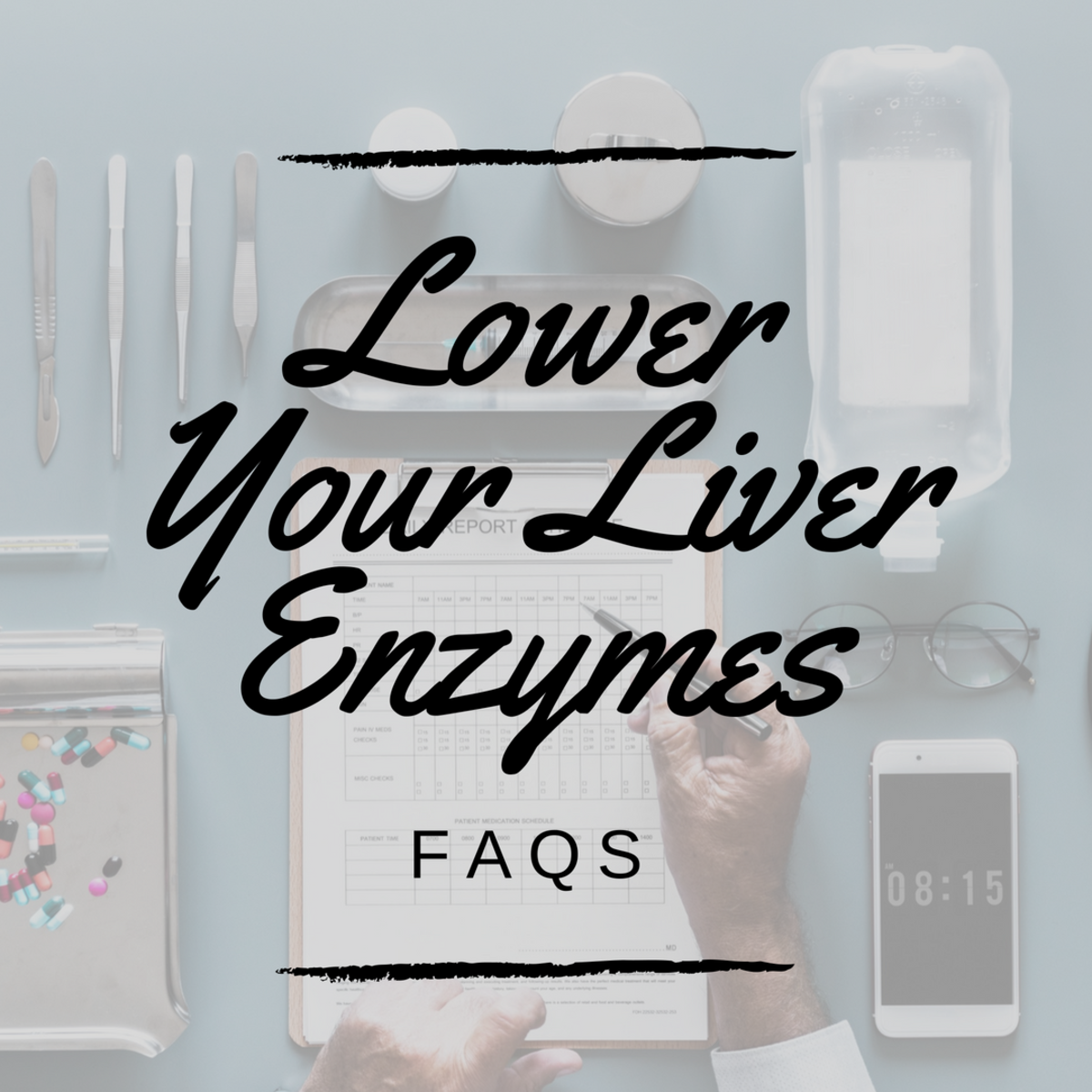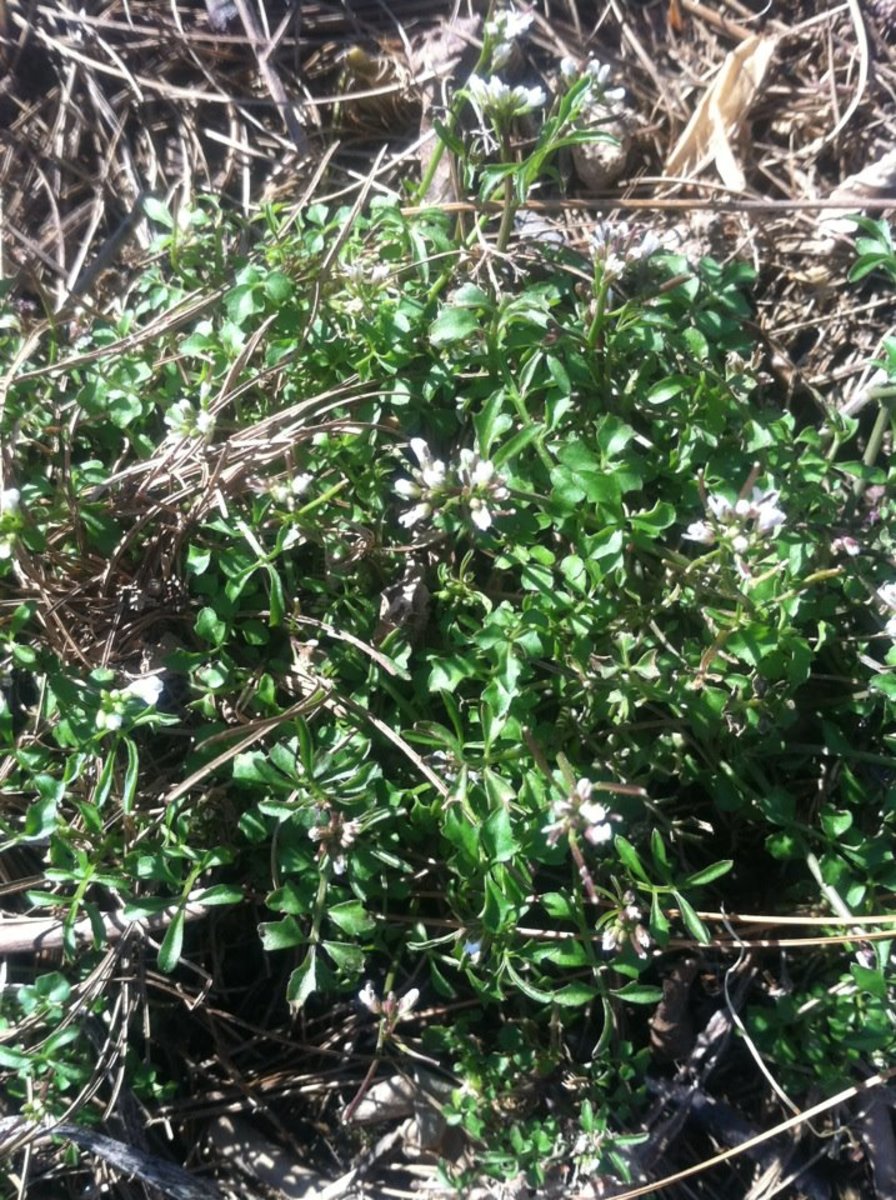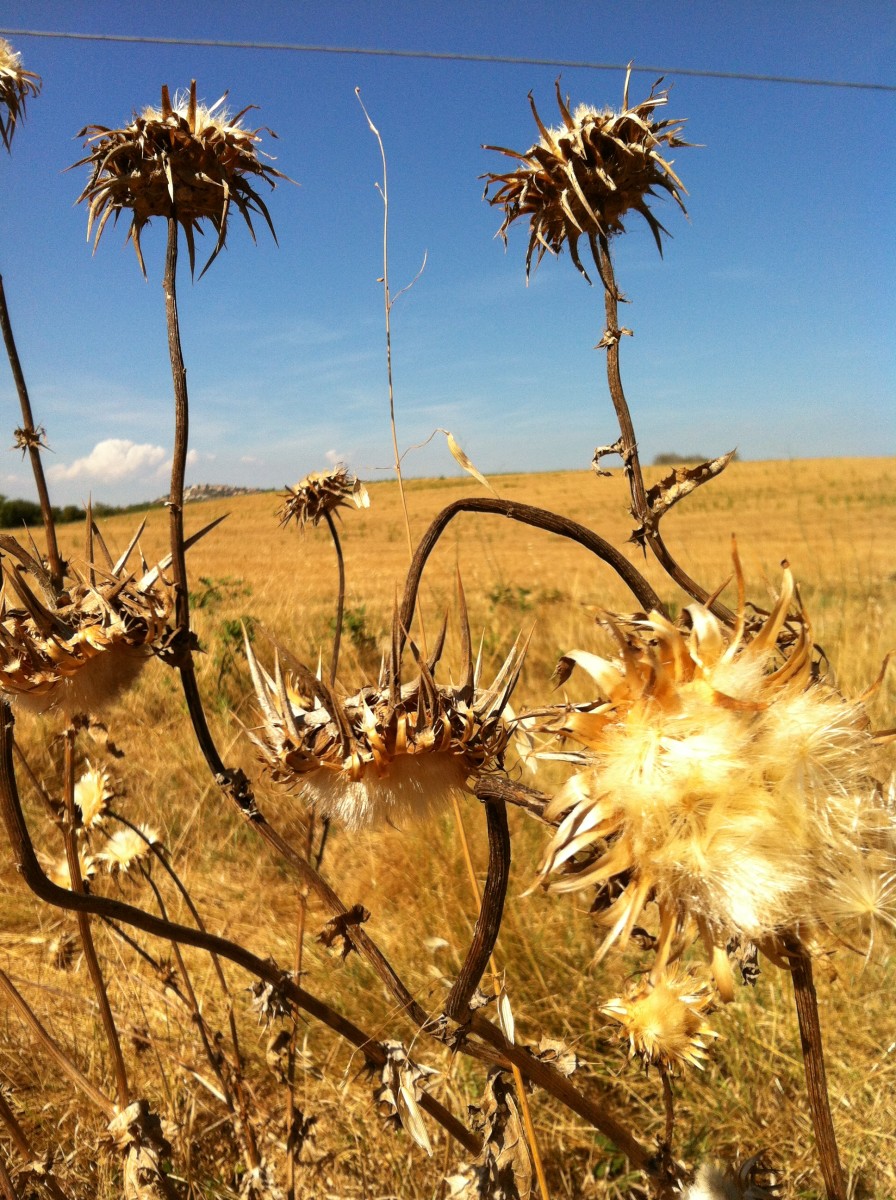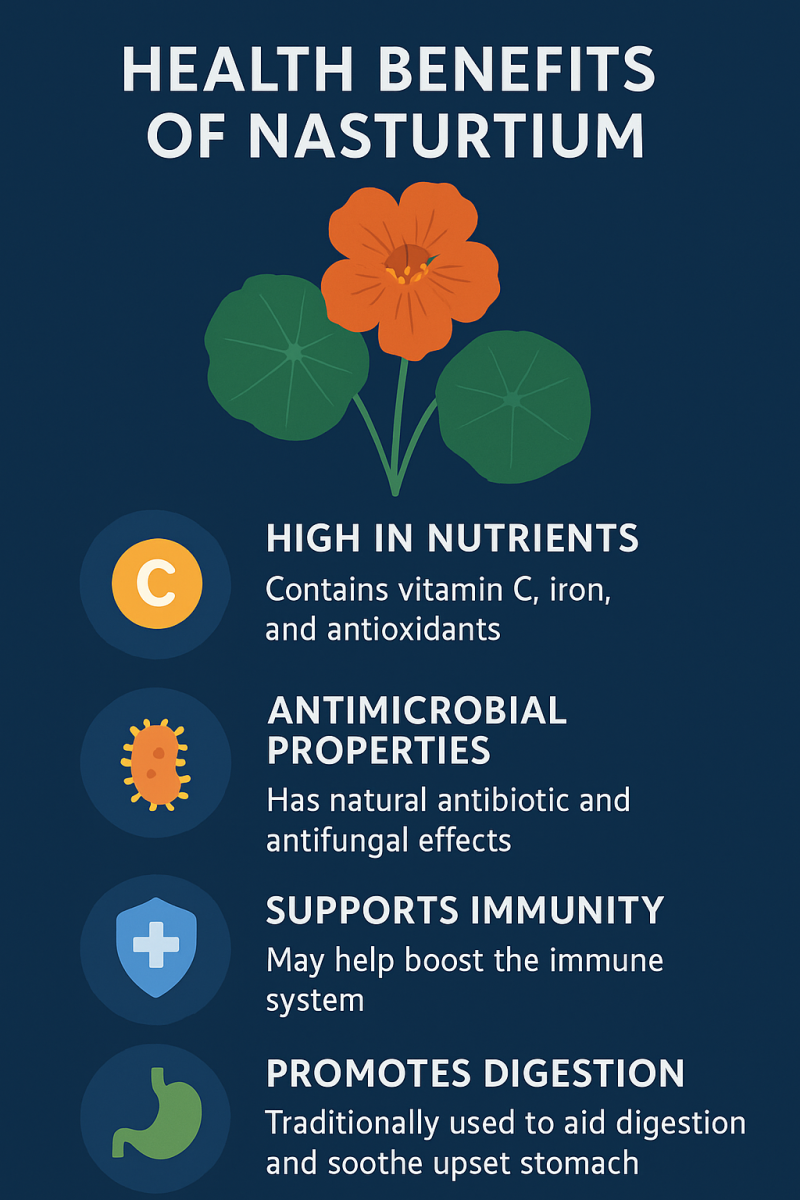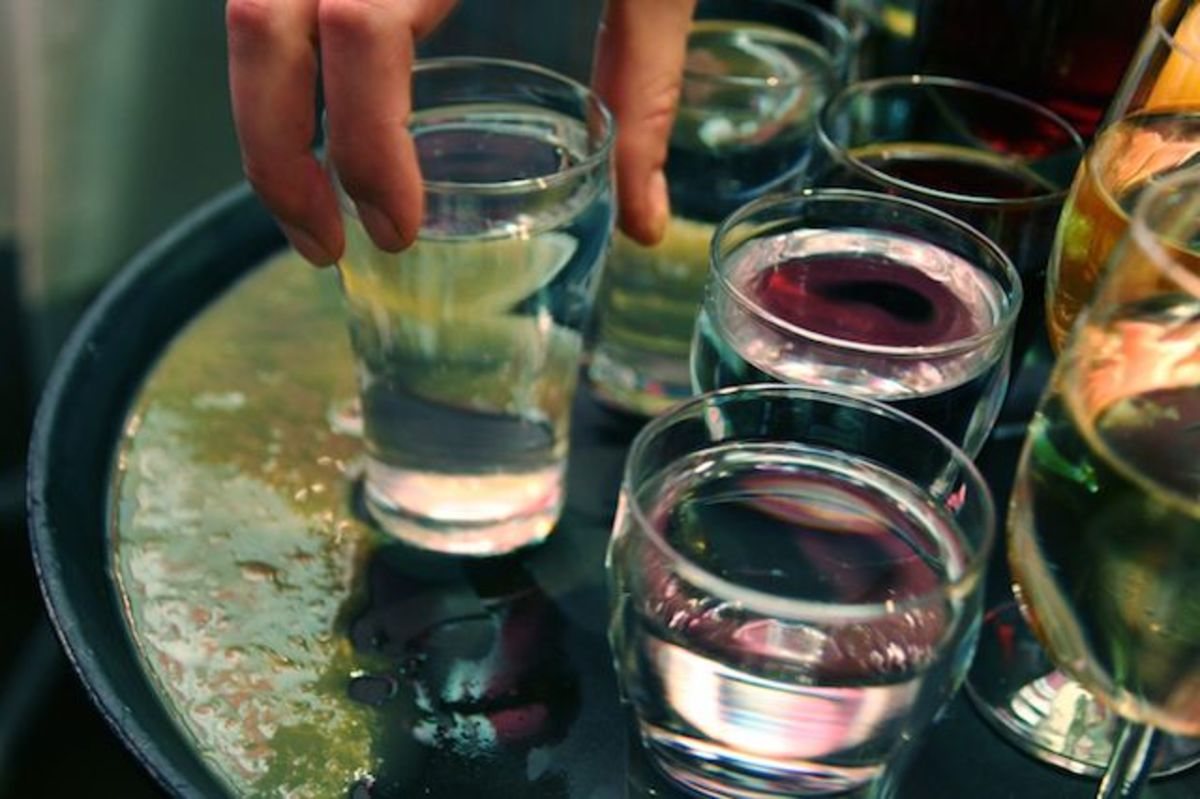10 Weeds Processed For Human Consumption
Weeds and Lawn Care Can Go Together
We pull them out. We hoe them out. We battle weeds like they're a plague. But, maybe it's time to change our attitudes given their useful effects. At least for these ten weeds, we should save the money from our lawn service and reap their healthful benefits. We can use weeds for drinks, topical solutions, or attire to name a few purposes.
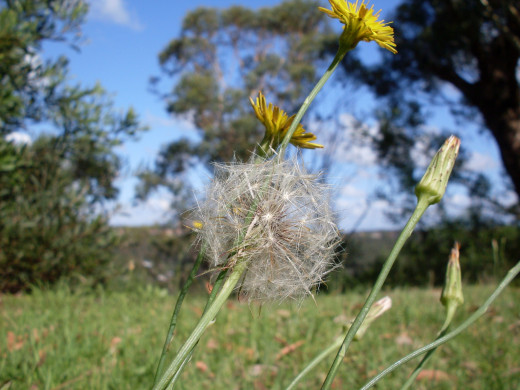
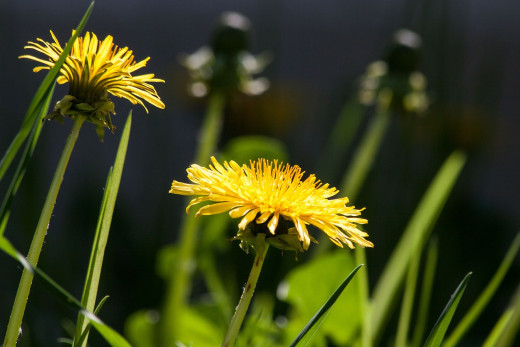
1. Dandelion
Dandelion (Taraxacum officinale) is considered enemy number one for pristine lawns. But, every part of this persistent plant, from the sharp lobed leaves, to the lengthy taproot, to the bright yellow flower, has a use; from salads, to herbal supplements, to wine.
If you've ever had an assorted greens salad, chances are it included dandelion leaves. These tender plants along with other greens such as arugula, watercress, and endive now make up the most popular ingredients for a variety of dishes at restaurants and homes. Their nutritional value makes them a preferred choice over traditional vegetables.
The dandelion tap root grows deep into the ground and is twisted and brittle. Pulling dandelions requires getting the entire root or it regenerates. It can be eaten like any tubular vegetable and is also used as an herbal supplement for treating infections or as a diuretic.
In addition to using the bright, yellow flower as food, it is more commonly used to make juice or wine. Only the yellow part of the flower is used since the green sepals surrounding the base adds an undesirable bitter taste.
Dandelion leaves are found in the produce section of most grocery stores or vegetable markets while extracts and powders are available at most vitamin shops.
If you still don't consider the dandelion a useful weed, then just picture in your mind children delightfully blowing the cluster of seeds into the wind, and try not to smile.
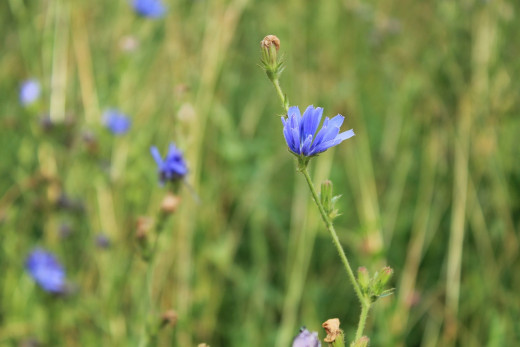
2. Chicory
Chicory (Cichorium intybus) grows on the sides of roads in ditches or fields. It's not as attractive as some of its wild flower counterparts with its light blue flower atop a tall stalk of a plant. But, its uses are many, from a coffee substitute to food to medicine.
The roots are dried and ground into a powder that is combined with coffee to mellow the flavor. The tubes are also used as food when boiled.
The chicory leaves are similar to a dandelion leaf but with less lobes. They are usually boiled and eaten as a side dish to replace spinach.
Products containing chicory are available at most grocery stores and supplements at most nutritional centers. To find fresh chicory may require going to a natural food store or vegetable market.
Chicory's quiet demeanor has not saved it from harvesters. The history of this plant goes back to ancient Egypt where it was cultivated for medicinal purposes and over time became a fierce competitor to coffee as it still is in some parts of the world today.
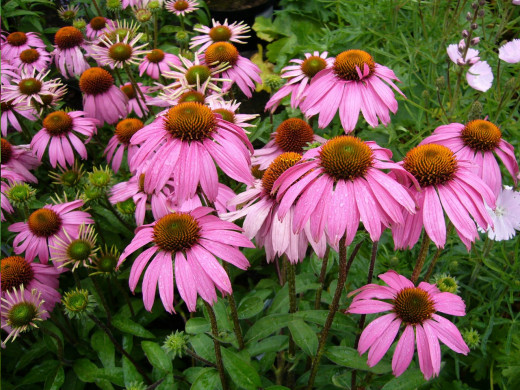
3. Echinacea
Echinacea, pronounced ek-uh-ney-shuh, is from the Coneflower family. It grows wild in open damp to dry areas of fields, but is also cultivated for producing medicine and nutritional supplements. Its purple petal flowers with a spiny center make it a colorful addition when used in landscape settings.
Primarily today Echinacea is used as a nutritional supplement that is touted as boosting immune systems to fight colds, flu, and other common ailments. Historically the plants applications ranged from treatment of wounds, burns, and insect bites, to the chewing of roots for toothache and throat infections.
Echinacea supplements are typically available wherever they sell vitamins and nutritional products.
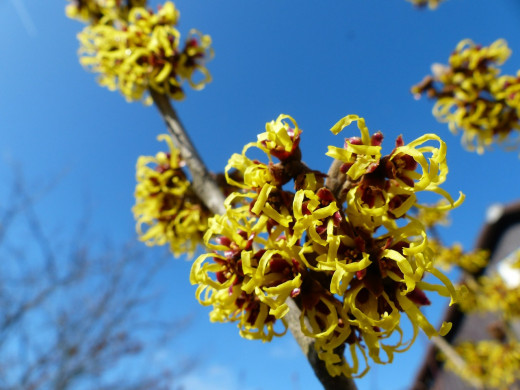
4. Witch Hazel
Witch Hazel (Hamamelis virginiana), ahhh. No, seriously, ahhh! Witch Hazel has been known for centuries to have soothing astringent properties, similar to rubbing alcohol, but less harsh. The wavy edged, smooth, broad leaves cover a shrub or small tree. It flowers from mid to late fall with sparse, yellow, ribbon-like petals.
Witch Hazel the astringent is produced from the leaves and bark. The North American Witch-hazel shrub variety is the most popular for the production of commercial healthcare products. There are numerous medical uses for Witch Hazel, but the most common are topical solutions to reduce swelling, inflammation, and redness.
Products with witch hazel are generally available at most grocery and pharmacy stores.
However, if laughter is the best medicine then the animated version in our beloved Bugs Bunny cartoons may be the better choice of two Witch Hazels.
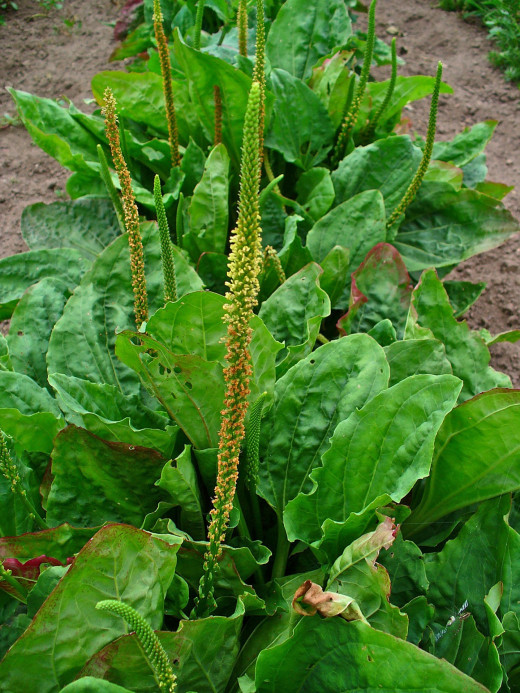
5. Plantain
Plantain (Plantago major), not the banana, but the weed that grows profusely in the yard. The leaves are broad, oval shaped and with smooth edges. Tiny green flowers cover a spike that shoots up in the center of the plant.
The newer, tender leaves are edible as eaten raw, steamed, boiled, or sautéed. The older leaves are edible as well but are bitter and more fibrous. The unique flower is a spike usually less than four inches in length. The seeds are used as grain or ground into flour. They are well-known psyllium seeds, which are sold as a fiber supplement or laxative.
Plantain has astringent properties that are used to soothe wounds, burns, stings, and rashes. A poultice made from the leaves and applied to the affected area is believed to reduce pain, aid healing, and prevent infection.
Historically the plant was called the white man's footprint by Native Americans because it was brought over by European settlers where it was cultivated for food and medicine. It then followed the settlers as they migrated across the United States.
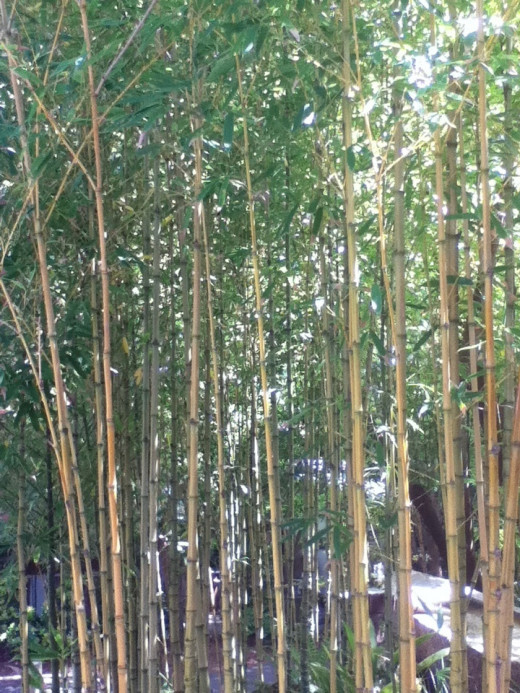
6. Bamboo
Bamboo (Bambuseae), where to begin. Bamboo is used for everything from food to landscaping to clothing to flooring. It truly is a wonder weed. And, since it replenishes easily and quickly, it is available in endless supply.
Bamboo is considered a weed because it is invasive and hard to control. Pray that your neighbors don't plant it as part of their landscaping or it will soon become a part of yours as well. With over 200 different species worldwide, the most common in the United States (Phyllostachys aurea) can grow up to 30 feet in height. The nodes in the green culms or stems are used to distinguish it from other types of bamboo.
The shoots from young bamboo plants are used as a vegetable in salads and stir fry dishes. They're fibrous and nutritious making them an excellent addition to any meal. Bamboo shoots are available canned or fresh at most grocery stores.
Although not readily available juice from tender bamboo shoots is a suggested treatment for asthma and coughs.
Bamboo has incredible strength that has been said to rival that of steel. For that reason bamboo has become very popular for building and textile materials. Products made from bamboo are easy to find at home improvement and clothing stores.
A common houseplant called lucky bamboo is believed to bring happiness and prosperity to the home.
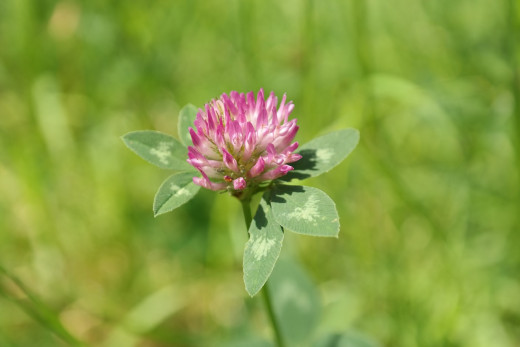
7. Red Clover
Red Clover (Trifolium pretense) is pretty much ignored compared to other lawn weeds, but is still considered an undesirable for the most pristine yards. One leaf has three leaflets, otherwise known as a shamrock.
The most common use for red clover in the United States is for livestock fodder. But over the course of history humans have found this plant to be useful in many ways.
The flowers are dark pink clusters that resemble miniature pom-poms. High in protein, the blossoms are a great addition to salad or sautéed with other vegetables. They can also be dried and crushed for making tea. Red clover is available at some grocery stores, but mostly natural food stores are more likely to carry the item.
The flower tops are considered an herbal remedy for a variety of conditions including cancer prevention, indigestion, high cholesterol, and menopausal symptoms. It is also considered useful to treat pulmonary symptoms such as coughs, asthma, and bronchitis. Red clover supplements or extract can be found at some grocery stores, but typically it is available at pharmacies and vitamin shops.
Saint Patrick used a clover to teach the three Christian virtues. Each of the leaflets of the trifoliate leaf is thought to stand for faith, hope, and love. Folklore has it that a four leaf clover is considered good fortune to find and that fourth leaflet represents luck.
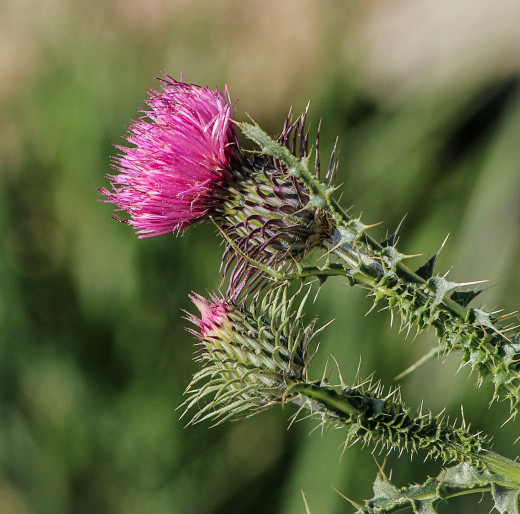
Do You Consume Weeds?
Which of the 10 weeds mentioned in this article do you consume?
8. Milk Thistle
Milk Thistle (Silybum marianum) has beautiful, purple flower heads, but the thorny leaves will prevent you from plucking them. It grows wild in yards, ditches, and fields as high as six feet. The large oblong, sharp lobed leaves are green with white veins and spines on the edges.
Milk thistle's pale, green leaves are used as a substitute for spinach. The leaves are cooked and used as a vegetable side dish, and, together the leaves and flowers can be added to salads. The seeds are used for making tea, sprinkled on salads for a nutritional boost, or when roasted then brewed it works as a coffee substitute. The seeds taste similar to flax seeds and are mild to bland. The seeds and leaves are available at most natural food stores.
Milk thistle seeds are thought to contain flavonoids that might protect and repair liver cells by ridding it of toxins and improving bile flow. Its antioxidant and anti-inflammatory effects are considered helpful for the treatment of some skin disorders. Unlike the seeds however, milk thistle plant extract may enhance the effects of estrogen. Milk thistle extract and seeds are available at most herbal or nutritional stores.
Folklore suggests that the milky-white veins of the leaves came from the milk of the Virgin Mary who fell on a thistle plant, hence the common names of Saint Mary's thistle, Mary Thistle, blessed milk thistle, or Marian Thistle.
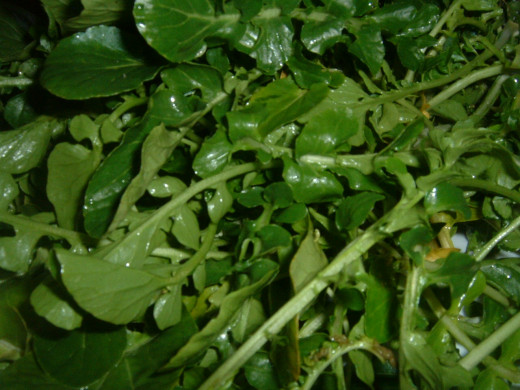
9. Watercress
Watercress (Nasturtium officinale) grows rapidly along streams, rivers, and drainage ditches. The plants hollow stems float making them an excellent survivor in their semi-aquatic environments. Small, round green leaves on the stems are arranged in a sparse, feather-like appearance.
More nutritious than most common vegetables and fruit, you may want to think twice before removing the watercress garnish from your plate the next time you're at a restaurant. This plant is quickly becoming a popular addition in salads, sandwiches, pasta, and stir fries. Watercress is available in the produce section of most grocery stores.
Watercress is believed to have medicinal uses for coughs and flu-like symptoms. Other uses include cancer prevention, treating baldness, and constipation. Watercress applied as a topical solution to the skin has been thought to relieve arthritis, eczema, and warts.
Watercress isn't just for humans. Many wildlife species such as muskrats, ducks, and deer also enjoy a good, nutritional meal of watercress.
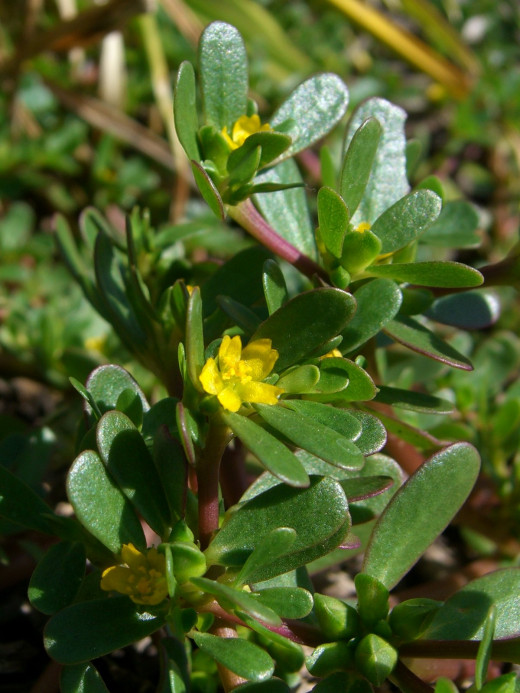
10. Purslane
Purslane (Portulaca oleracea) is the nuisance plant that grows in the cracks of driveways and sidewalks. It spreads and crawls along the surface never worrying about being stepped on or ran over. It'll survive thanks to its taproot that grows deep into the ground finding moisture and nutrients. Purslane tends to lie on the ground, but is capable of growing as high as 15 inches.
This hearty thriving weed is rich in antioxidants and taste similar to spinach. It bears clusters of small, delicate looking flowers that are also edible. The stems, leaves, and flowers are used in salads, sautéed alone as a side dish, or steeped for tea.
Purslane has a long history of medicinal uses going back 2000 years. It has been known to be used for treating headaches and a variety of causes of upset stomach. Topical uses of this plant are as an anti-inflammatory for burns and bites, and as an anti-aging solution because of its nutritional properties.
Purslane is good for the environment in that during times of drought at night it captures carbon dioxide with its leaves which is then converted into malic acid. During the day the malic acid is then converted into glucose. The leaves are known to have ten times more malic acid content in the morning than in the afternoon making the morning leaves taste tangier.
If You Can't Beat Them, Join Them
Most, if not all of the plants below, make beautiful plant arrangements on the kitchen or patio table during the months when they are at their growing peek.
Weed Ladies
Words Of Caution
- The medicinal use for this list of plants has not been sufficiently studied to determine effectiveness. One should always discuss treatments with their medical adviser.
- Stay away from areas that use chemical sprays, or where there is animal droppings, or any other type of toxin if you choose to gather wild vegetation versus purchasing in the store.

